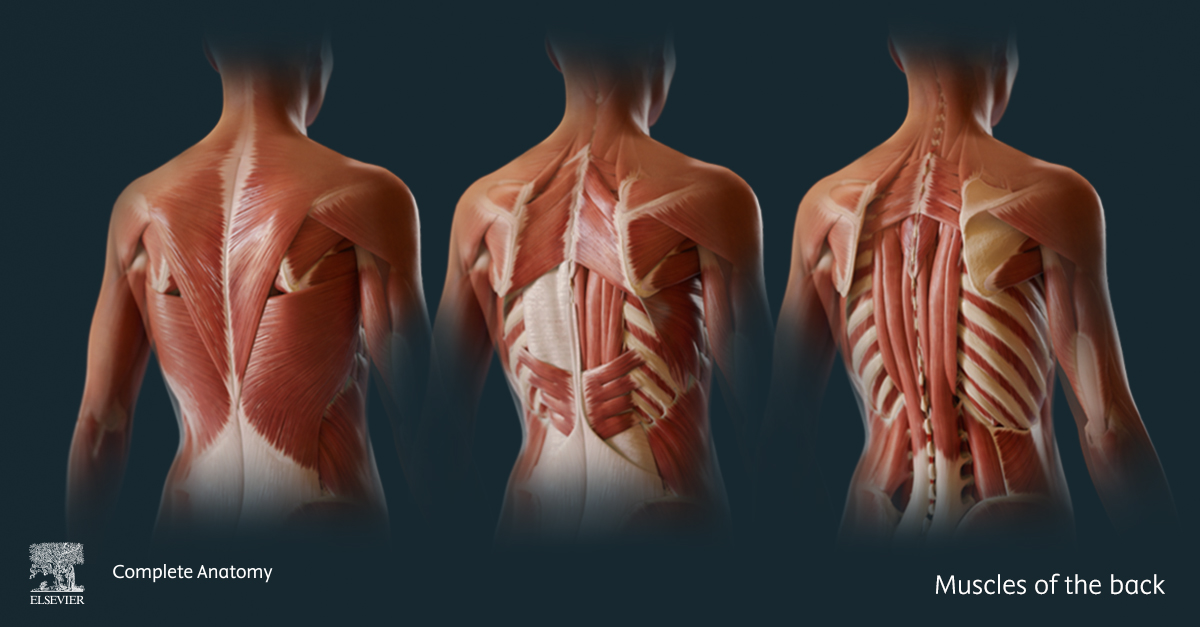
The muscles of the back include those that move the vertebral column, help maintain posture, and are involved in movements of the pectoral girdle and arm. The muscles of the back can be categorised into two main groups: the extrinsic and the intrinsic muscles.
The extrinsic muscles of the back are generally involved in movements of the pectoral girdle, arm and ribs. The most superficial of the extrinsic muscles are the trapezius and latissimus dorsi muscles. Deep to these muscles, in the intermediate layer, lie the rhomboid major, rhomboid minor, levator scapulae, serratus posterior superior and serratus posterior inferior.
Deep to the thoracolumbar fascia and the extrinsic muscles, lie the intrinsic muscles of the back. The intrinsic muscles of the back are generally involved in movements of the vertebral column and help maintain posture. The intrinsic muscles can be further divided into three layers.
The superficial intrinsic layer consists of the spinotransversales muscles. The spinotransversales muscles include the splenius capitis and splenius colli muscles. These muscles are specifically involved in movements of the head and neck such as extension and rotation. This group of muscles is known as the “spinotransversales” because they originate from spinous processes and insert onto transverse processes of vertebrae.
The intermediate intrinsic layer consists of the erector spinae muscles. The erector spinae muscles include three vertically oriented muscles that lie parallel to the vertebral column. Specifically these are the spinalis, longissimus and iliocostalis muscles. This group of muscles is known as the “erector spinae” because they are responsible for straightening the vertebral column.
The deep intrinsic layer consist of the transversospinal, interspinales and intertransversarii muscles. The transversospinal muscles consist of the semispinalis capitis, semispinalis colli, semispinalis thoracis, multifidus and rotatores muscles. This group of muscles is known as the “transversospinal muscles” because they originate from transverse processes and insert onto spinous processes of vertebrae. The interspinales muscles are divided into the interspinales colli, interspinales thoracis and interspinales lumborum. Similarly, the intertransversarii muscles are divided into the intertransversarii colli, intertransversarii thoracis and intertransversarii lumborum. This group of muscles is known as the “intertransversarii muscles” because they originate from and insert onto the transverse processes of adjacent vertebrae.
Check out Complete Anatomy to learn more about the anatomy, including the origin, insertion and action, of the muscles of the back!